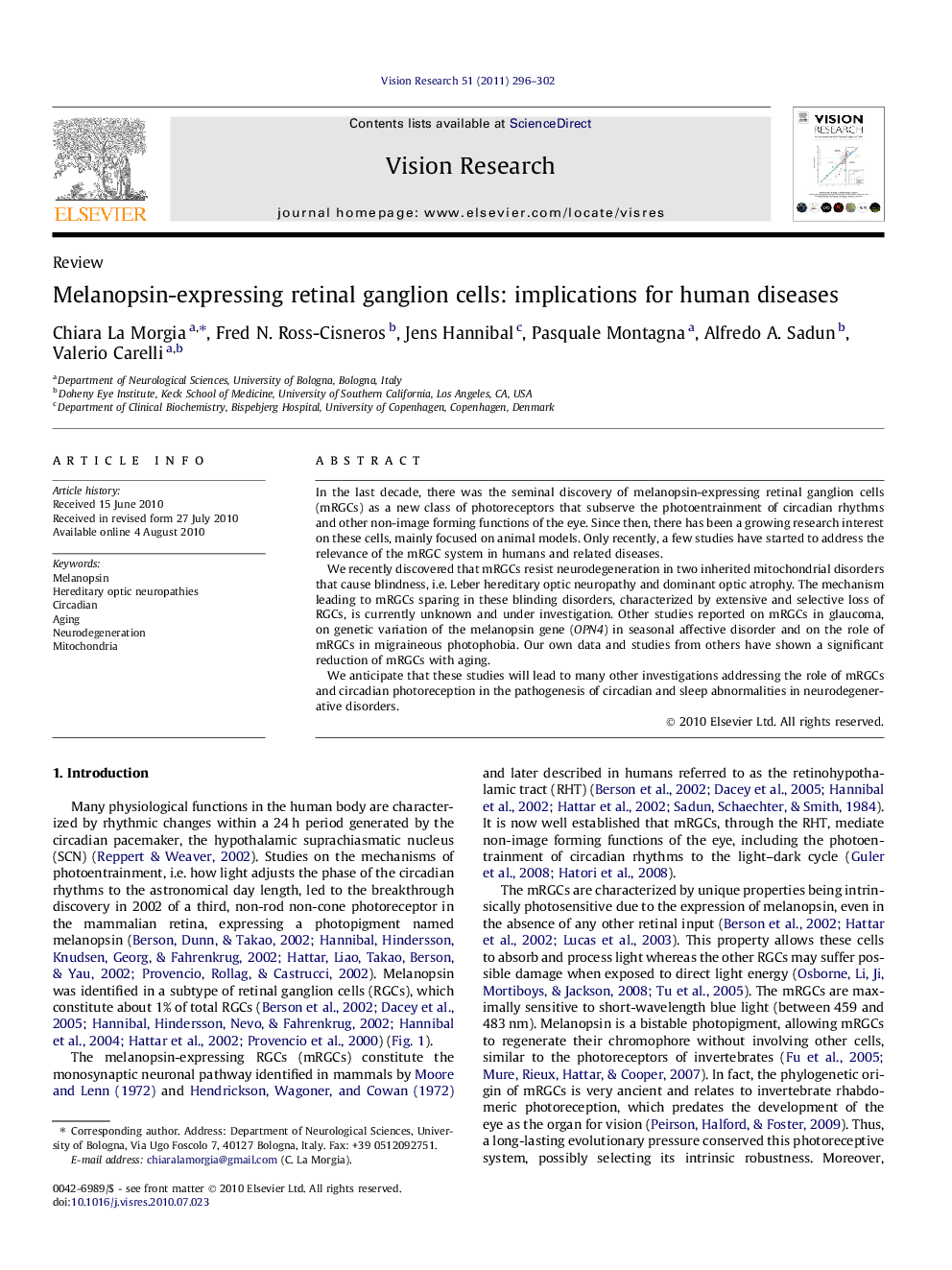| Article ID | Journal | Published Year | Pages | File Type |
|---|---|---|---|---|
| 4034326 | Vision Research | 2011 | 7 Pages |
In the last decade, there was the seminal discovery of melanopsin-expressing retinal ganglion cells (mRGCs) as a new class of photoreceptors that subserve the photoentrainment of circadian rhythms and other non-image forming functions of the eye. Since then, there has been a growing research interest on these cells, mainly focused on animal models. Only recently, a few studies have started to address the relevance of the mRGC system in humans and related diseases.We recently discovered that mRGCs resist neurodegeneration in two inherited mitochondrial disorders that cause blindness, i.e. Leber hereditary optic neuropathy and dominant optic atrophy. The mechanism leading to mRGCs sparing in these blinding disorders, characterized by extensive and selective loss of RGCs, is currently unknown and under investigation. Other studies reported on mRGCs in glaucoma, on genetic variation of the melanopsin gene (OPN4) in seasonal affective disorder and on the role of mRGCs in migraineous photophobia. Our own data and studies from others have shown a significant reduction of mRGCs with aging.We anticipate that these studies will lead to many other investigations addressing the role of mRGCs and circadian photoreception in the pathogenesis of circadian and sleep abnormalities in neurodegenerative disorders.
